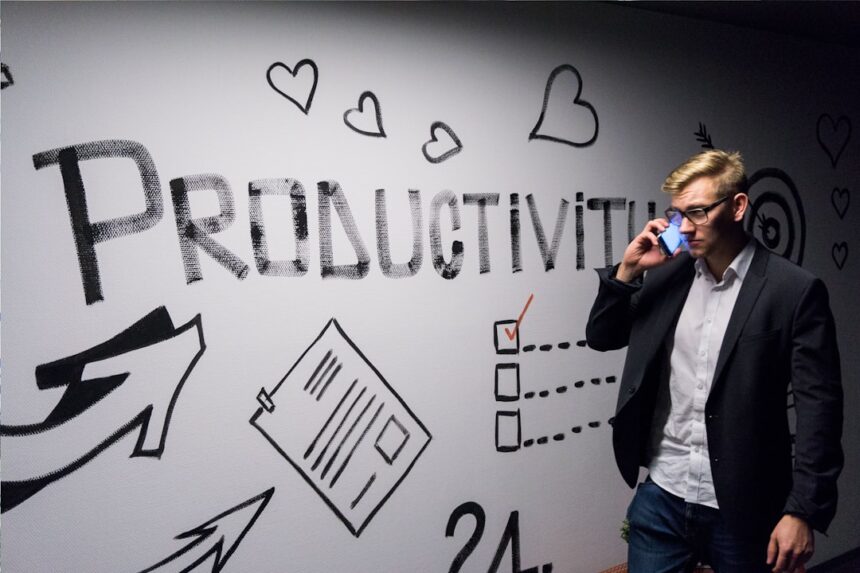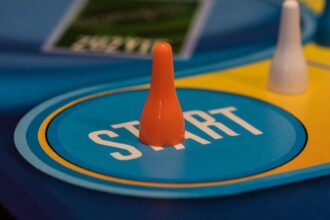To truly harness the power of productivity, you must first grasp what a productivity mindset entails. This mindset is not merely about getting more done in less time; it’s about cultivating an attitude that embraces efficiency, focus, and a proactive approach to tasks. When you adopt this mindset, you begin to see challenges as opportunities for growth rather than obstacles.
This shift in perspective can significantly enhance your overall effectiveness and satisfaction in both personal and professional realms. Moreover, understanding the productivity mindset involves recognizing the importance of self-discipline and motivation.
You need to cultivate habits that support your goals and align with your values. This means being intentional about how you spend your time and making conscious choices that lead to productive outcomes. By fostering a mindset that values progress over perfection, you can create a more fulfilling and balanced life.
Embracing this approach will not only help you achieve your immediate objectives but also set the stage for long-term success.
Key Takeaways
- Understanding the Productivity Mindset: Focus on developing a mindset that values efficiency and effectiveness in all tasks.
- Identifying and Overcoming Procrastination: Recognize procrastination patterns and implement strategies to overcome them.
- Setting Clear and Achievable Goals: Define specific, measurable, achievable, relevant, and time-bound (SMART) goals to stay focused and motivated.
- Time Management Strategies for Increased Productivity: Implement techniques such as the Pomodoro Technique or time blocking to maximize productivity.
- Cultivating a Positive and Motivated Mindset: Foster a positive attitude and motivation through mindfulness, gratitude, and self-reflection.
Identifying and Overcoming Procrastination
Procrastination is a common hurdle that many face on their journey to increased productivity. To overcome it, you first need to identify the underlying reasons for your procrastination. Are you feeling overwhelmed by the task at hand?
Do you fear failure or perfectionism? By pinpointing these triggers, you can develop strategies to combat them effectively. For instance, breaking tasks into smaller, manageable steps can make them feel less daunting and more achievable.
This technique allows you to focus on one aspect at a time, reducing anxiety and increasing your likelihood of starting. Additionally, it’s essential to create an environment that minimizes distractions and encourages focus. This might involve decluttering your workspace or setting specific times for uninterrupted work.
You can also employ techniques such as the Pomodoro Technique, where you work in short bursts followed by brief breaks. This method not only helps maintain your concentration but also makes the work feel more manageable. By actively addressing procrastination and implementing these strategies, you can reclaim your time and boost your productivity.
Setting Clear and Achievable Goals

Setting clear and achievable goals is a cornerstone of effective productivity. When you define what you want to accomplish, you create a roadmap that guides your actions and decisions. Start by ensuring that your goals are specific, measurable, attainable, relevant, and time-bound (SMART).
This framework helps clarify your objectives and provides a clear path forward. For example, instead of saying, “I want to be healthier,” you might set a goal to “exercise for 30 minutes three times a week for the next month.” This specificity not only makes the goal more tangible but also allows you to track your progress. Moreover, it’s crucial to regularly review and adjust your goals as needed.
Life is dynamic, and circumstances can change rapidly. By remaining flexible and open to reassessing your objectives, you can ensure that they continue to align with your priorities and aspirations. Celebrate small victories along the way to maintain motivation and reinforce your commitment to achieving your goals.
This practice not only enhances your productivity but also fosters a sense of accomplishment that propels you forward.
Time Management Strategies for Increased Productivity
| Time Management Strategy | Productivity Impact |
|---|---|
| Prioritizing tasks | Increased focus on important tasks |
| Setting specific goals | Clear direction and motivation |
| Creating a schedule | Improved time allocation |
| Eliminating distractions | Enhanced concentration |
| Taking regular breaks | Improved mental clarity and energy |
Effective time management is vital for maximizing productivity. One of the most powerful strategies is prioritization—understanding which tasks are most important and tackling them first. You can use tools like the Eisenhower Matrix to categorize tasks based on urgency and importance, helping you focus on what truly matters.
By dedicating your energy to high-priority tasks, you can make significant progress toward your goals while minimizing time spent on less critical activities. Another essential time management strategy is planning your day or week in advance. Take some time at the beginning of each week to outline your tasks and allocate specific time slots for each one.
This proactive approach not only helps you stay organized but also reduces decision fatigue throughout the day. Additionally, consider using digital tools or apps designed for task management; these can help streamline your workflow and keep you accountable. By implementing these time management strategies, you’ll find yourself working more efficiently and effectively.
Cultivating a Positive and Motivated Mindset
A positive and motivated mindset is crucial for sustaining productivity over the long term. To cultivate this mindset, start by surrounding yourself with positivity—whether through uplifting quotes, supportive colleagues, or inspiring content. Engaging with positive influences can help shift your perspective and reinforce your belief in your abilities.
Additionally, practice gratitude by acknowledging the progress you’ve made and the opportunities ahead of you. This simple act can significantly enhance your outlook and motivation. Furthermore, it’s essential to set aside time for self-reflection.
Regularly assess what motivates you and what drains your energy. By understanding these dynamics, you can make informed choices about how to structure your day and environment to foster motivation. Incorporate activities that energize you into your routine—whether it’s exercise, hobbies, or socializing with friends.
By prioritizing positivity and motivation in your life, you’ll create a fertile ground for productivity to flourish.
Prioritizing Tasks and Managing Distractions

Prioritizing tasks effectively is key to maintaining focus and managing distractions in today’s fast-paced world. Start by listing all the tasks you need to complete and then categorize them based on urgency and importance. This will help you identify which tasks require immediate attention and which can be scheduled for later.
By focusing on high-priority tasks first, you ensure that your most critical responsibilities are addressed without delay. In addition to prioritization, managing distractions is essential for maintaining productivity. Identify common distractions in your environment—be it social media notifications, noisy surroundings, or even cluttered workspaces—and take steps to minimize them.
Consider setting specific times for checking emails or social media rather than allowing them to interrupt your workflow constantly. Creating a dedicated workspace that promotes focus can also be beneficial; ensure it’s organized and free from unnecessary distractions. By mastering the art of prioritization and distraction management, you’ll find it easier to stay on track and accomplish your goals.
Developing a Consistent Routine for Optimal Productivity
Establishing a consistent routine is one of the most effective ways to enhance productivity. A well-structured routine provides a sense of stability and predictability in your day-to-day life, allowing you to allocate time efficiently for various tasks. Start by identifying the times of day when you feel most alert and focused; this is when you should tackle your most challenging tasks.
Incorporate regular breaks into your routine to recharge mentally and physically—this will help prevent burnout and maintain high levels of productivity throughout the day. Moreover, consistency breeds habit formation. When you stick to a routine over time, certain behaviors become automatic, reducing the mental effort required to initiate tasks.
This can be particularly beneficial when it comes to less enjoyable activities; by embedding them into your routine, they become part of your daily rhythm rather than something you dread tackling. As you develop this consistency in your routine, you’ll likely notice an increase in both efficiency and satisfaction in your work.
Embracing Flexibility and Adaptability in the Work Environment
While routines are essential for productivity, embracing flexibility is equally important in today’s ever-changing work environment. The ability to adapt to new circumstances or unexpected challenges can significantly impact your overall effectiveness. When faced with disruptions or changes in priorities, approach them with an open mind rather than resistance.
This adaptability allows you to pivot quickly without losing momentum or becoming overwhelmed. Additionally, fostering a culture of flexibility within teams can enhance collaboration and innovation. Encourage open communication about changing needs or challenges among team members; this creates an environment where everyone feels comfortable sharing ideas or seeking assistance when necessary.
By embracing flexibility both individually and collectively, you’ll cultivate resilience that empowers you to navigate obstacles while maintaining productivity.
Utilizing Technology and Tools to Enhance Efficiency
In today’s digital age, leveraging technology can significantly enhance your productivity levels. Numerous tools are available designed specifically for task management, project collaboration, time tracking, and more—these can streamline processes and save valuable time.
Moreover, consider utilizing automation tools that can handle repetitive tasks for you—this frees up mental space for more critical thinking or creative endeavors. Email filters can help prioritize important messages while scheduling apps ensure that meetings are organized efficiently without back-and-forth communication delays. By embracing technology thoughtfully, you’ll find yourself working smarter rather than harder.
Practicing Self-Care and Avoiding Burnout
Self-care is often overlooked in discussions about productivity; however, it plays a crucial role in maintaining long-term effectiveness. When you’re physically or mentally drained, even the simplest tasks can feel overwhelming. Prioritize self-care by incorporating activities that rejuvenate you into your daily routine—whether it’s exercise, meditation, reading, or spending time with loved ones.
Additionally, be mindful of signs of burnout—such as chronic fatigue or decreased motivation—and take proactive steps to address them before they escalate further. Regular breaks throughout the day can help recharge your energy levels while ensuring that you’re not pushing yourself beyond reasonable limits. By prioritizing self-care alongside productivity efforts, you’ll create a sustainable balance that fosters both well-being and effectiveness.
Cultivating a Growth Mindset for Continuous Improvement
Finally, cultivating a growth mindset is essential for continuous improvement in productivity. Embrace challenges as opportunities for learning rather than viewing them as setbacks; this perspective shift encourages resilience in the face of difficulties. When you approach tasks with curiosity rather than fear of failure, you’re more likely to experiment with new strategies or seek feedback from others—both of which contribute significantly to personal growth.
Additionally, celebrate progress along the way—acknowledge not just major achievements but also small victories that demonstrate improvement over time. This practice reinforces positive behavior while motivating you to keep pushing forward toward greater goals. By fostering a growth mindset within yourself—and encouraging it among colleagues—you’ll create an environment where continuous improvement thrives alongside productivity efforts.
In conclusion, enhancing productivity requires a multifaceted approach that encompasses mindset shifts, effective strategies, self-care practices, and adaptability in an ever-evolving landscape. By understanding these principles deeply—and applying them consistently—you’ll unlock new levels of efficiency while enjoying greater fulfillment in both work and life.
If you’re looking to enhance your productivity mindset, you might find the insights shared on Productive Patty’s website particularly useful. One article that stands out is available on their homepage, where they delve into strategies for maintaining focus and motivation in a fast-paced world. The article provides practical tips and techniques that can be easily integrated into your daily routine to boost productivity. For more details, you can read the full article by visiting Productive Patty.
FAQs
What is a productivity mindset?
A productivity mindset refers to the mental attitude and approach towards maximizing efficiency and output in various aspects of life, such as work, personal goals, and daily tasks.
Why is a productivity mindset important?
Having a productivity mindset can lead to increased focus, motivation, and the ability to prioritize tasks effectively, ultimately leading to greater success and accomplishment.
How can one develop a productivity mindset?
Developing a productivity mindset involves setting clear goals, managing time effectively, staying organized, and maintaining a positive and proactive attitude towards tasks and challenges.
What are some key characteristics of a productivity mindset?
Key characteristics of a productivity mindset include self-discipline, resilience, adaptability, and the ability to stay focused and motivated in the face of distractions and obstacles.
How can a productivity mindset benefit individuals and organizations?
A productivity mindset can lead to increased efficiency, improved performance, and a greater sense of accomplishment for individuals, while also contributing to overall success and growth for organizations.




